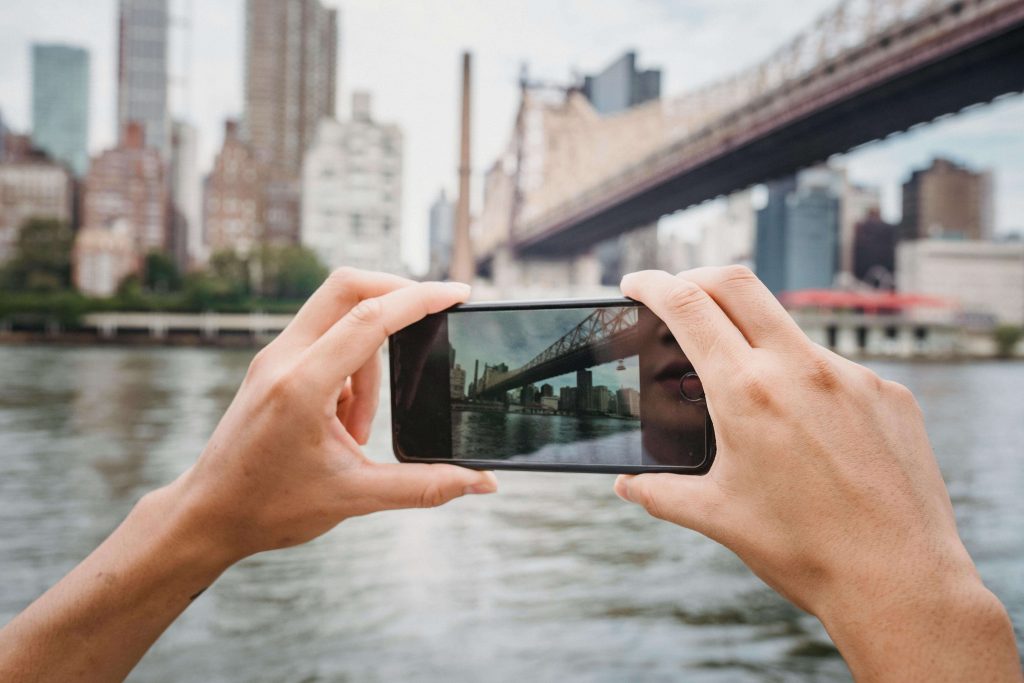World Photography Day: How coding has transformed the artform
Publication date: August 19, 2024
As we celebrate World Photography Day, let’s appreciate the history of taking pictures — a tale of relentless technological innovation. We’ve come a long way since the first 8-hour exposure on a pewter plate in 1826, and the first ever 0.01 megapixel digital camera in 1975.
World Photography Day on August 19 the perfect time to reflect on the impact of coding on digital photography — and why we’re able to walk around with powerful cameras in our pockets every day. From technical advancements to sophisticated cameras in our smartphones, coding has revolutionised how we capture and share moments.
The evolution of digital photography
Photography has come a long way from the days of film cameras. In 1975, Kodak’s Steven Sasson built the first digital camera using a movie lens, Motorola parts, 16 batteries, and Fairchild CCD sensors. It was the size of a printer, and took 23 seconds to take the first digital photo.
This first leap marked a significant shift in photography concepts, allowing photographers to capture images electronically. This shift was powered by coding, which enabled the development of digital sensors, image processing algorithms and storage solutions.
Digital cameras use sensors to convert light into electrical signals. These sensors, often CCD (charge-coupled device) or CMOS (complementary metal-oxide-semiconductor), are products of extensive coding and engineering. The raw data captured by these sensors undergoes complex processing to produce the final image. This processing involves noise reduction, colour correction and image sharpening, all driven by sophisticated algorithms.
Smartphones: The ubiquitous camera
Smartphones have democratised photography, making high-quality cameras accessible to millions. The tiny cameras in smartphones are marvels of modern engineering, packed with features that were once exclusive to high-end professional cameras. At the heart of these advancements is coding.
- Image processing: Smartphone cameras use advanced algorithms to process images in real-time. These algorithms handle everything from adjusting exposure and white balance to applying HDR (High Dynamic Range) effects. For instance, when you take a photo in low light, the camera’s software enhances the image by reducing noise and brightening shadows, all thanks to code.
- Computational photography: This term refers to the use of algorithms to enhance and extend the capabilities of digital photography. Features like portrait mode, which blurs the background to mimic the effect of a DSLR camera, and night mode, which allows for clear photos in very low light, rely heavily on computational photography. These features are powered by machine learning and AI, which are deeply rooted in coding.
- Augmented reality (AR): AR features in smartphone cameras, such as filters on social media apps or interactive games, rely on real-time image processing and computer vision. These applications use code to detect and track faces and objects, overlaying digital information onto the real world.
The role of machine learning and AI
Machine learning and artificial intelligence (AI) have brought a new dimension to photography. AI can enhance photos by understanding the context and content of an image. For example:
- Scene recognition: AI algorithms can analyse a scene and adjust camera settings automatically for optimal results. Whether you’re shooting a landscape, a portrait or a fast-moving subject, the camera adjusts settings like aperture, shutter speed and ISO to capture the best possible image.
- Editing tools: AI-powered editing tools can now perform tasks that once required professional skills. Tools like Google’s Snapseed or Adobe Photoshop use AI to remove unwanted objects, enhance colours, and even apply artistic effects.

Photo by Samson Katt
Coding and photography in education
EU Code Week celebrates the intersection of technology and creativity, making it an excellent platform to explore how coding enhances photography. Teaching coding through photography projects can engage students and spark their interest in both fields. For example:
- Building simple photo filters: Students can learn about image processing by coding their own photo filters. This exercise teaches basic programming concepts while also demonstrating how images are manipulated digitally.
- Automating photo enhancements: By coding scripts to automate photo enhancements, students can see the practical applications of coding. They can write code to batch edit photos, applying consistent adjustments across multiple images.
Future trends
The future of photography is closely tied to advancements in coding and technology. Emerging trends include:
- Real-time object recognition: As AI continues to improve, cameras will become even smarter, recognising objects and scenes in real time with greater accuracy.
- 3D photography: Advances in computer vision and coding are paving the way for 3D photography, allowing for more immersive and interactive experiences.
- Integration with IoT: Cameras integrated with the Internet of Things (IoT) will enable new functionalities, such as smart home surveillance systems that can recognise faces and activities.
The power of capturing the moment
Photography is not only the art of capturing moments but also the incredible technology that makes it possible. Coding has been instrumental in transforming photography, making it more accessible, versatile and powerful. So the next time you pick up your camera — or your smartphone — appreciate the magic of photography, powered by code!


